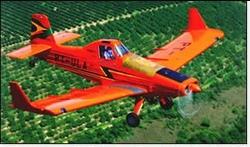Over the years, there has been discussion of ethanol (E-85) based aviation fuels. There are quite a few downsides, that's for sure. However, for each negative, there are those who seem to overcome the issues. There are a few pilots in Brazil who use ethanol based fuels with what appear to be good results.
Some of the downsides when compared to 100LL avgas include: significantly Lower energy density and lower specific energy, corrosion potential, ethanol is hygroscopic (it attracts and holds moisture) and possible wear/oil related issues.
Some interesting positive points: Very high knock resistance (some consider it "always" knock free), roughly 114 octane equivalent, near zero risk of detonation under boost, A diesel-like high thermal efficiency when direct injection, high compression and boost is employed (45% thermal efficiency is possible under higher loads) and it is highly oxygenated, resulting in clean combustion with very low exhaust soot, and of course, the cooling effect, which is responsible for the knock resistance and subsequent volumetric efficiency boost of alcohols.
My thoughts are not to consider it as a replacement for 100LL, but whether it's a viable aviation fuel at all. If, for example, we were to utilize a modern direct injected/turbocharged, high compression engine, configure it properly for efficient E-85 use, the results may be in some ways acceptable, vs. using 100LL in say, a TSIO 360 or 520 Continental.
Some additional items. No fuel enrichment is required under boost/high loads. So in a proper engine design under high loads, the heating value disadvantage is largely or completely offset by no need for enrichment, as would be common in turbocharged, low compression, air cooled aircraft engines.
Some of the downsides when compared to 100LL avgas include: significantly Lower energy density and lower specific energy, corrosion potential, ethanol is hygroscopic (it attracts and holds moisture) and possible wear/oil related issues.
Some interesting positive points: Very high knock resistance (some consider it "always" knock free), roughly 114 octane equivalent, near zero risk of detonation under boost, A diesel-like high thermal efficiency when direct injection, high compression and boost is employed (45% thermal efficiency is possible under higher loads) and it is highly oxygenated, resulting in clean combustion with very low exhaust soot, and of course, the cooling effect, which is responsible for the knock resistance and subsequent volumetric efficiency boost of alcohols.
My thoughts are not to consider it as a replacement for 100LL, but whether it's a viable aviation fuel at all. If, for example, we were to utilize a modern direct injected/turbocharged, high compression engine, configure it properly for efficient E-85 use, the results may be in some ways acceptable, vs. using 100LL in say, a TSIO 360 or 520 Continental.
Some additional items. No fuel enrichment is required under boost/high loads. So in a proper engine design under high loads, the heating value disadvantage is largely or completely offset by no need for enrichment, as would be common in turbocharged, low compression, air cooled aircraft engines.
Last edited:

